 |
 |
 |
| |
Late Entry to Care in Almost Half
of People With Chronic HCV in France
|
| |
| |
EASL International Liver Congress, June 23-26, 2021
Mark Mascolini
Almost half of people with chronic HCV infection in France enter care late, according to analysis of 9174 HCV patients across the country [1]. What makes this finding especially concerning is that late presentation to care often involves people who already have a high risk of fibrosis progression.
The European Association for the Study of Liver Disease (EASL) defines late presentation for HCV care as seeking care with severe liver fibrosis (Metavir score F3 or greater) and with no previous antiviral treatment. ANRS researchers who conducted this study noted that late HCV diagnosis delays disease management and may lead to higher rates of decompensated cirrhosis and mortality.
The ANRS team set out to identify clinical and sociologic predictors of late presentation among people with HCV monoinfection in the French national cohort ANRS CO22 HEPATHER, which began in 2012. All cohort members can have liver fibrosis measured when they enter the cohort. The researchers used the above EASL definition of late presentation.
The analysis focused on 9174 HEPATHER cohort members, 1236 of whom had data on liver fibrosis stage when they first sought HCV care. Men made up 56% of study participants, and median age stood at 45 years (interquartile range 36 to 54). Among these 1236 people with fibrosis data, 591 (48%) met the definition of late presentation to care. Among people with less than a 12-month delay between presentation and cohort entry, 51% had severe fibrosis at enrollment.
In a multivariate analysis adjusted for age, sex, and HCV genotype, 6 factors independently predicted late presentation for HCV care: male gender, age older than 45, HCV genotype 3, diabetes , past hazardous alcohol use, and current hazardous alcohol use. Variables not associated with late presentation for care included current moderate alcohol use, hypertension, obesity, overweight, underweight, born in Africa, born in Asia, born in Europe, tobacco smoking, and living in poverty.
Earlier research confirms associations between diabetes, HCV genotype 3, and past and current alcohol use with more advanced liver disease with HCV infection.
The researchers emphasized the "unacceptable paradox" that people who already run a higher risk of fibrosis progression often belong to groups that come to HCV care late, and this late presentation amplifies their higher fibrosis progression risk. The ANRS team stressed that the high prevalence of diabetes and hazardous alcohol use in socially deprived groups underlines the need for more innovative strategies to target HCV testing and treatment in these groups.
"Without effective interventions," the researchers concluded, "late presentation will continue to negatively affect the HCV cascade of care and the WHO goal to eliminate HCV by 2030."
Reference
1. Protopopescu C, Santos M, Delarocque-Astagneau E, et al. Late presentation for HCV care: time to target people with diabetes and/or hazardous alcohol use (ANRS CO22 HEPATHER cohort). EASL International Liver Congress, June 23-26, 2021. Abstract OS-728.
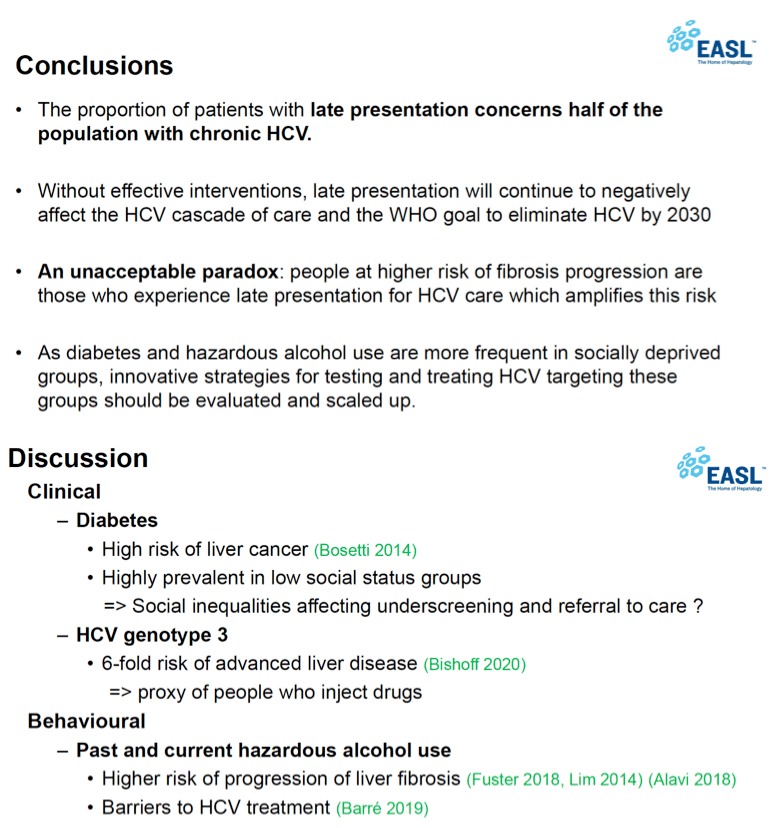
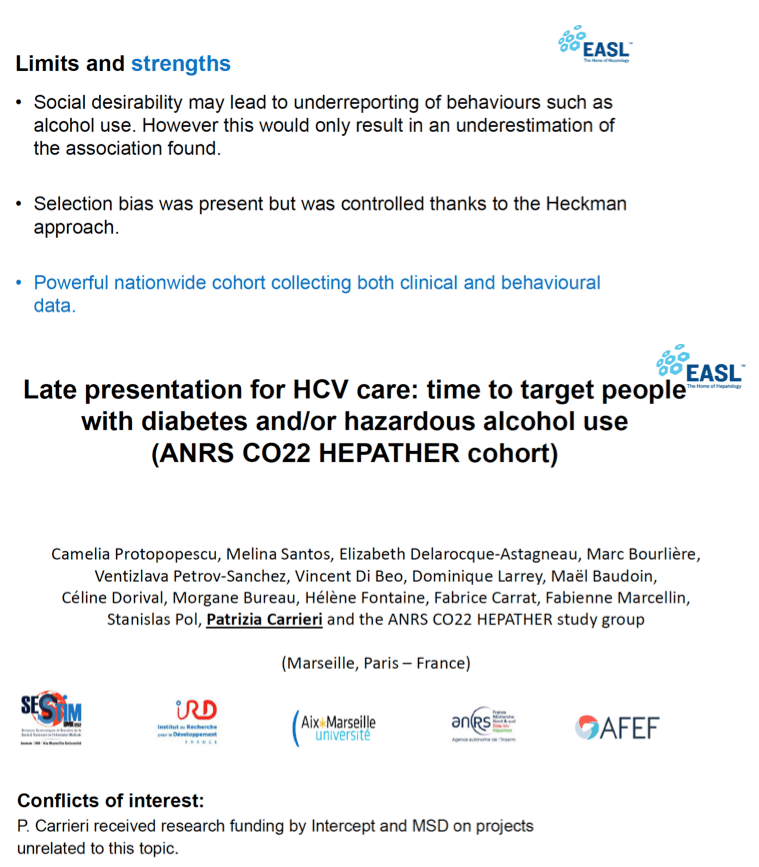
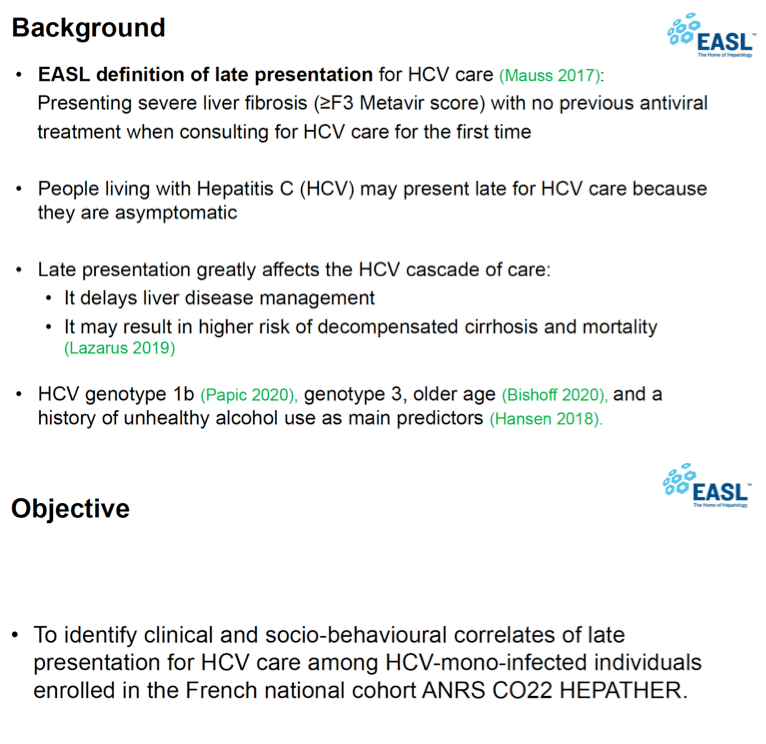
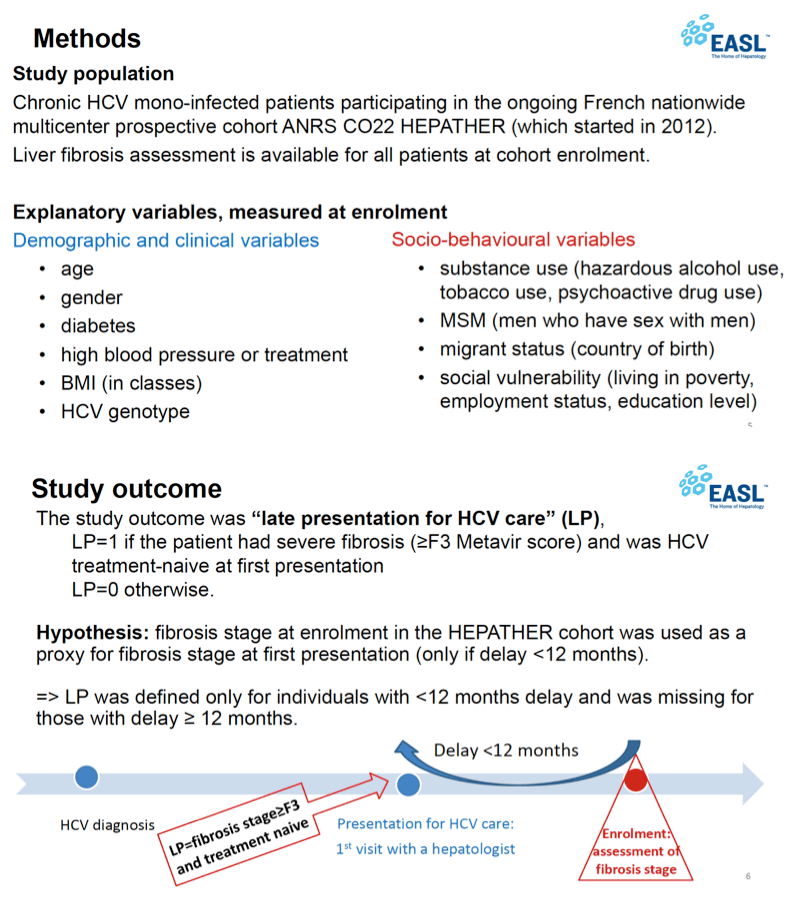
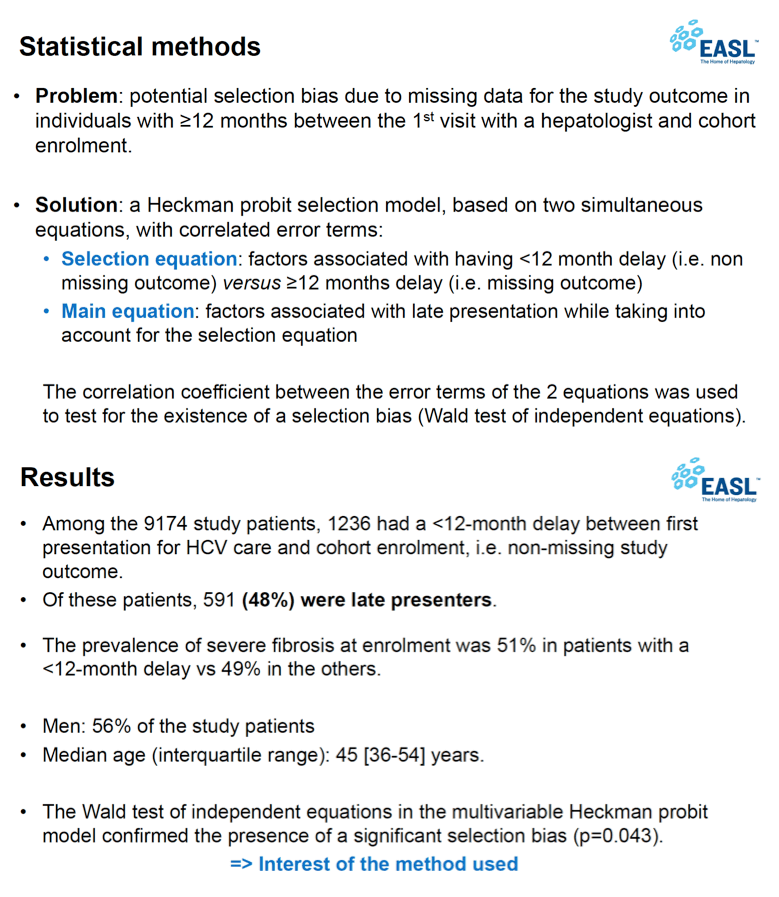
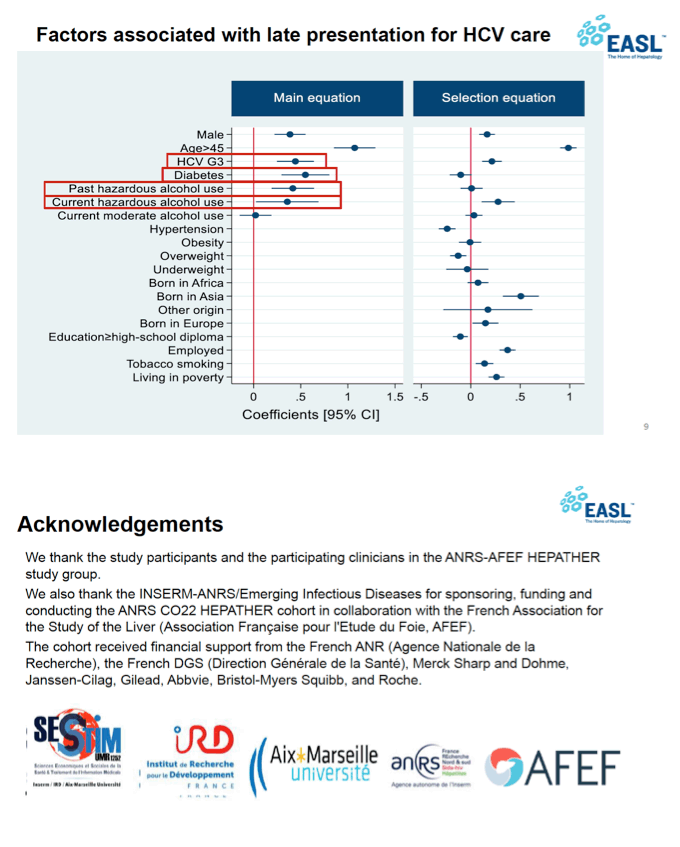
|
| |
|
 |
 |
|
|